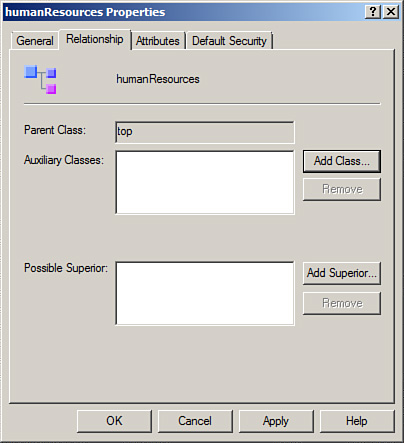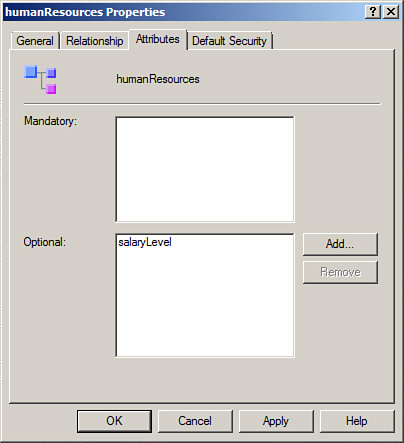Configure Class Relationships
|
Scenario/Problem: You want to configure the subclasses of a parent class.
|
Solution: Configure class relationships by using the Active Directory Schema snap-in.
To configure class relationships, perform the following steps:
1. | Log on to a domain controller or a member computer that has Windows Server 2008 RSAT installed.
|
2. | Click Start, click Administrative Tools, and click Active Directory Schema.
|
3. | In the console tree, expand Active Directory Schema and then click Classes.
|
4. | In the details pane, right-click the class on which you want to configure the relationship and click Properties.
|
5. | On the class properties page, click the Relationship tab, as shown in Figure 1.

|
6. | To add auxiliary classes, click Add Class and select the class you want to add as an auxiliary class.
|
7. | To remove auxiliary classes, click the auxiliary class you want to remove and then click Remove.
|
8. | To add superior classes, click Add Superior.
|
9. | To remove superior classes, click the superior class you want to remove and then click Remove.
|
10. | Click OK to save the changes. |
Configure Class Attributes
|
Scenario/Problem: You do not want to define the mandatory and optional attributes within a class.
|
Solution: Configure class attributes by using the Active Directory Schema snap-in.
To configure class attributes, perform the following steps:
1. | Log on to a domain controller or a member computer that has Windows Server 2008 RSAT installed.
|
2. | Click Start, click Administrative Tools, and click Active Directory Schema.
|
3. | In the console tree, expand Active Directory Schema and then click Classes.
|
4. | In the details pane, right-click the class on which you want to configure class attributes and click Properties.
|
5. | On the class properties page, click the Attributes tab, as shown in Figure 2.

|
6. | To add optional attributes to the class, click Add and select the attributes you want to add as optional.
|
7. | To remove optional attributes to the class, click the optional attribute you want to remove and then click Remove.
|
8. | Click OK to save the changes.
|